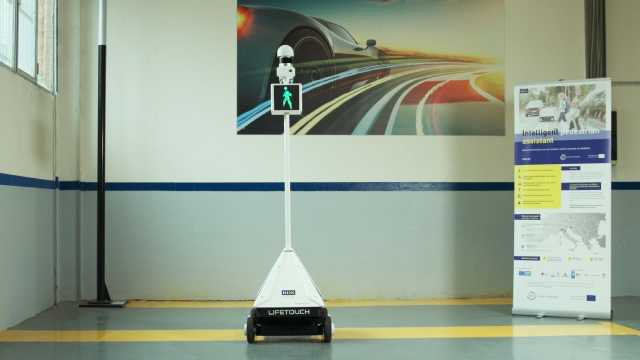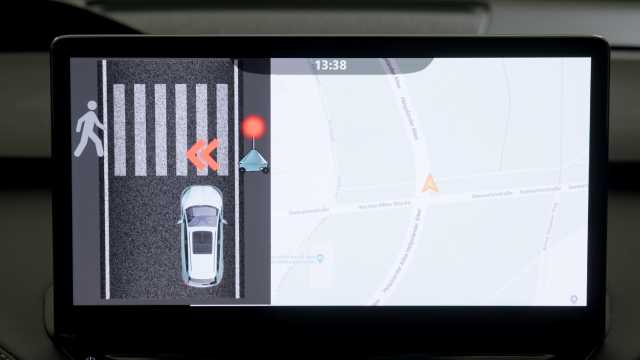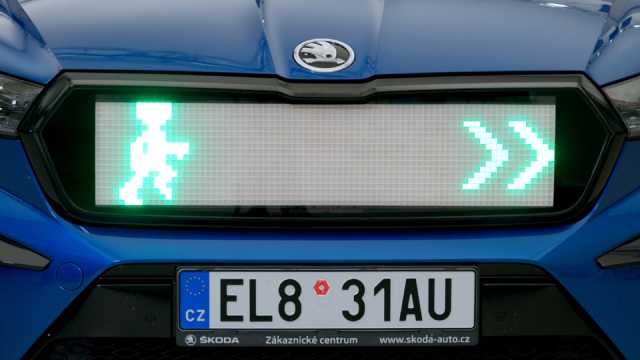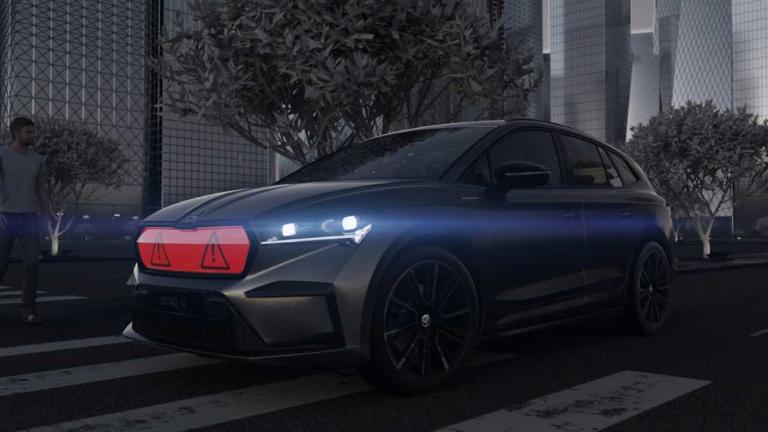Smart grilles and robot traffic lights for safe crossings: the ŠKODA project
The IPA2X robot is designed to help children, seniors, and people with disabilities cross the road safely, in cooperation with an integrated signal system on the cars' radiator grille.
A small robot traffic light makes its way across the pedestrian crossing, stops approaching cars and shows the green light to pedestrians, while the car that has just stopped shows the same signal on the radiator grille. It sounds like science fiction but it is actually a not-too-distant future that ŠKODA is working on.
The robot is called IPA2X and is designed to help children, seniors, and people with disabilities cross the road safely and, together with the signal system integrated into the car's radiator grille, was jointly developed by the Institute of Informatics, Robotics and Cybernetics at the Technical University of Prague (CIIRC), the Technical University of Munich, and ŠKODA.
The project, which leverages artificial intelligence and 5G mobile networks, is supported by the Urban Mobility initiative of the European Institute of Innovation and Technology (EIT) and also involves other companies specializing in autonomous driving, research institutes and technology companies. The result is a robot over two meters tall that looks like a mobile traffic light.

Warnings, images and sounds
"The robot moves to the center of the pedestrian crossing, then shows a green light, at which point pedestrians can cross. It also constantly monitors its surroundings, so it can detect cars approaching the intersection, thanks in part to sensors located at a height of two meters that allow it to see over parked vehicles. This enables it to move only when conditions are safe", explains CIIRC's Michal Sojka.
The robot displays both information for pedestrians and warnings for cars, showing drivers a stop sign. It also sends an alert directly to cars, which is displayed as an animation on the infotainment display. "The alert says that up ahead there is a pedestrian crossing where something is happening. Once people have crossed the road, the robot returns to the kerb. At that point the warning on the dashboard disappears", adds Sojka. In future developments, the robot will also emit audio signals.

Safety innovations
The warning system on the radiator grille, which allows it to communicate with its surroundings, is a ŠKODA signature innovation. It is not easy to send clear and unambiguous warnings to pedestrians from a distance, so the developers created a grille with integrated LED strips that allow pictograms and whole animations to be displayed.
"The component replaces the backlit Crystal Face of the Enyaq iV. It integrates supports for the LED strips, which are independently and separately programmable making it possible to create animations. The top consists of a lightweight diffusion layer and a protective weather cover" continues Zdeněk Herda, specialist for HMI simulations and automated driving within ŠKODA Technical Development.

From theory to practice
When a car approaches a pedestrian crossing, it communicates sufficiently in advance to pedestrians that it has spotted them, at which point it stops and displays green arrows to tell them they can cross. When they have completed the crossing and the car is about to set off, the message changes and communicates not to cross. On the other hand, if for some reason the car cannot stop, then it communicates an alert signal.
All of these signals are being tested and include green arrows and silhouettes - the same traffic light signals that we are used to - that are joined by a warning triangle or a red triangle with a cross: symbols that everyone can immediately understand. This is what is possible with current technologies; in the future traffic lights could also track the number, location and direction of people, sending the information to approaching cars.
From testing to everyday roads
The dialogue between robots and cars was the subject of tests organized in three European cities by ŠKODA experts and the Czech Technical University. In Milan and Modena, the robot was tested near schools, while in Ljubljana, Slovenia, the focus was on senior citizens. In addition to increasing safety, the project has the additional benefit of reducing traffic noise and pollution, as well as cutting costs - as a human being is no longer needed to guard the pedestrian crossing.
The development team received valuable feedback from Italian schoolchildren: "We learnt many useful things from the children: they found it strange that the robot did not talk, had no arms, or that it moved too slowly. They gave us many ideas on how to improve the robot", Sojka says. The traffic light robots will soon debut in other cities. "The testing phase should end in 2024, with the first robots ready on the streets as early as 2025," concludes project coordinator Andrea Bastoni of the Technical University of Munich.
Source: ŠKODA
VGI | Responsible OU: VP | Creation date: article date | Class 9.1
